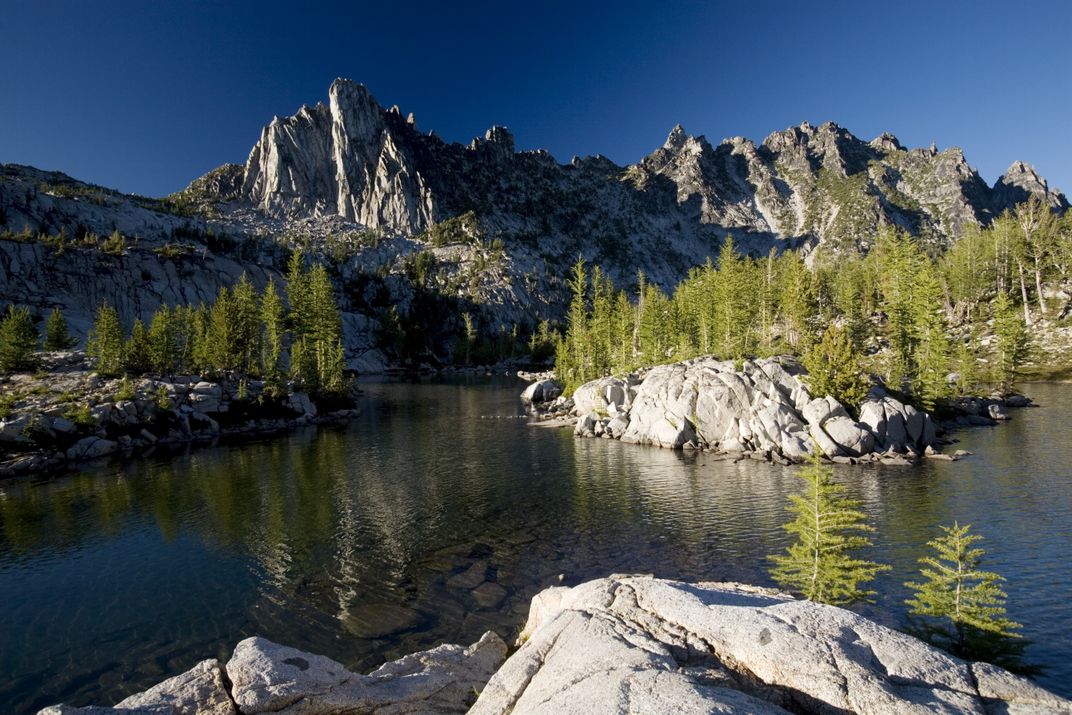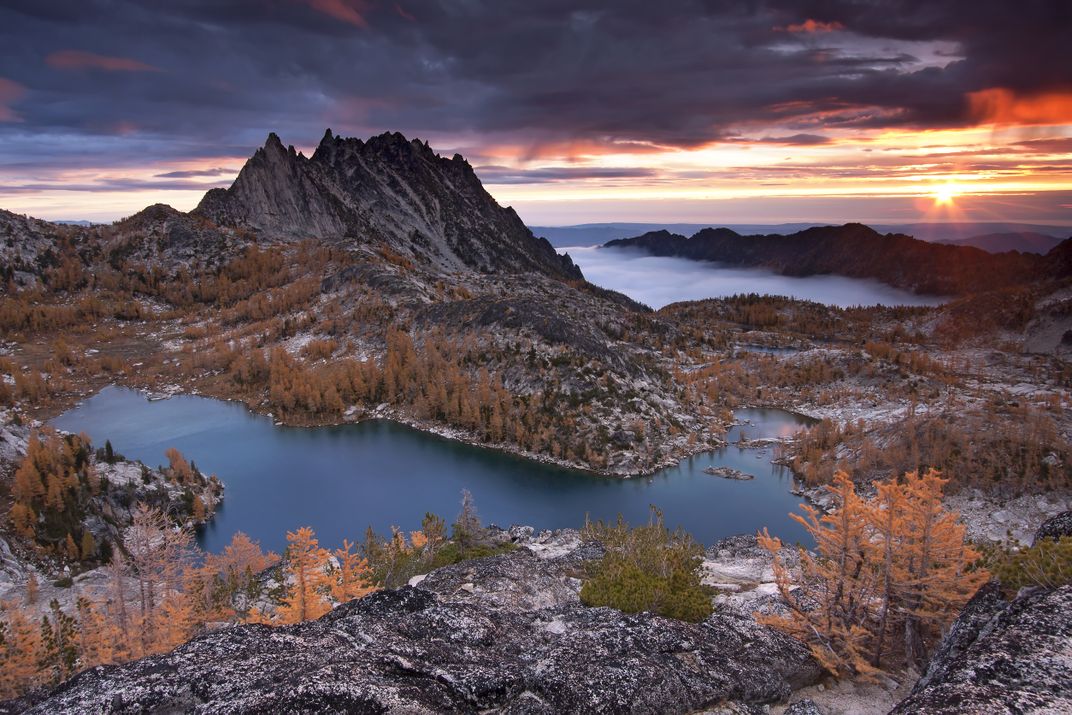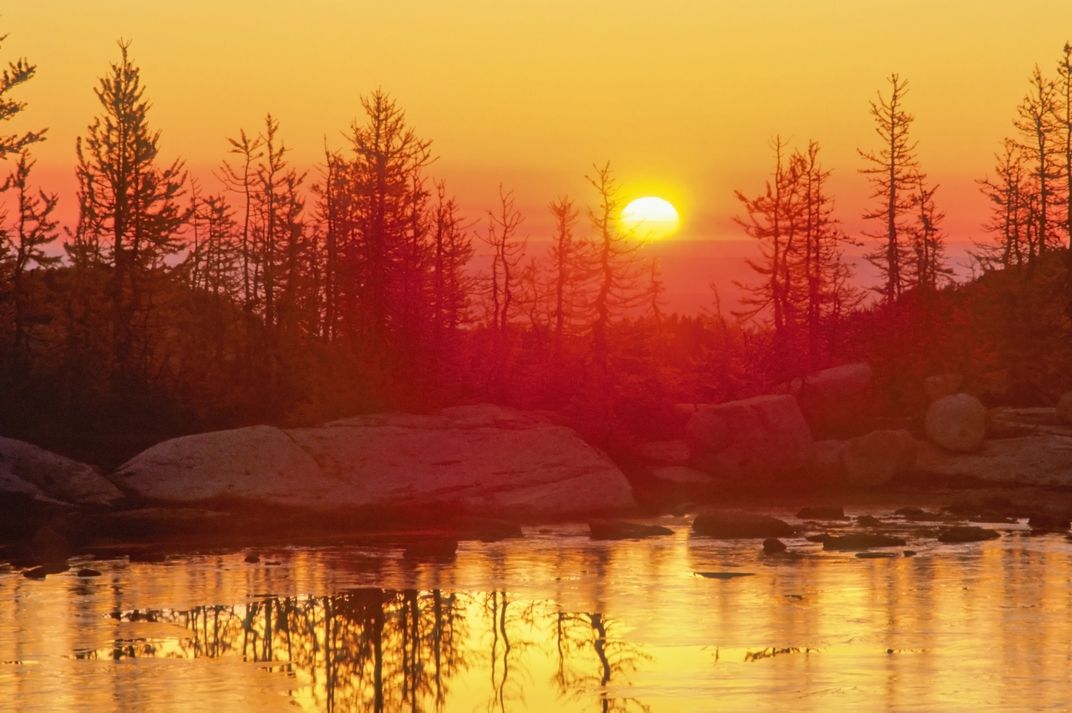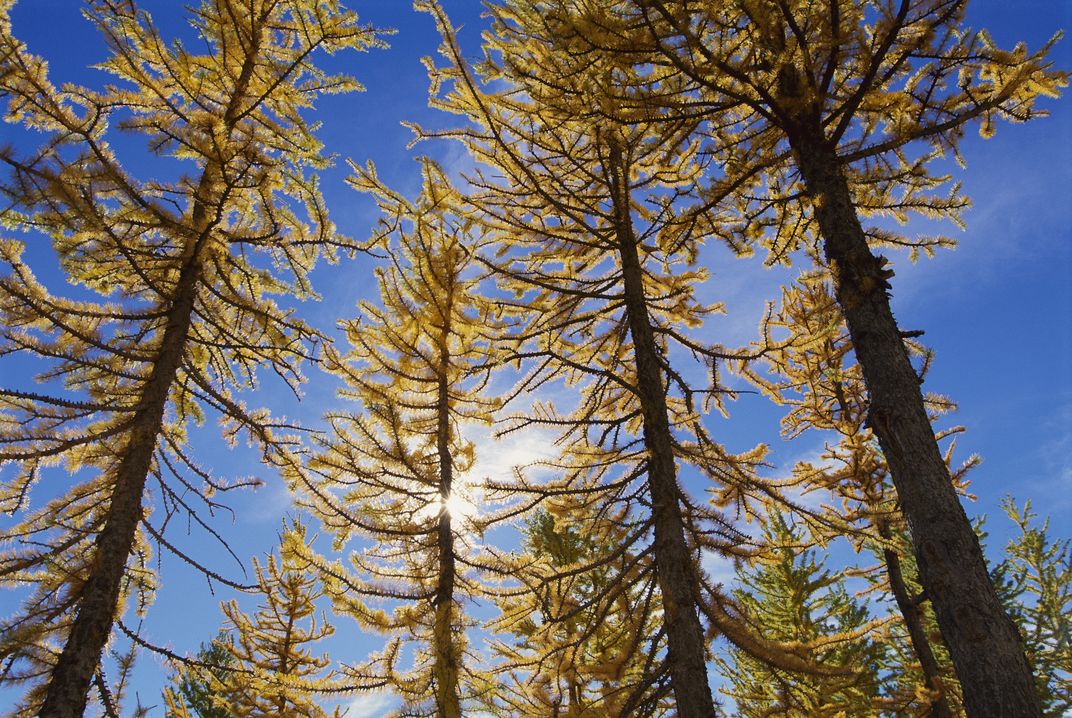Alpine Lakes Wilderness
Diverse forests, outstanding rock-climbing and scenic lakes
Location: Washington
Size: 391,988 acres
Year Designated: 1984
Fast Fact: Home to some of the best rock climbing sites in the Western United States.
As its name suggests, the Alpine Lakes Wilderness is a land of vast alpine lakes, left over from glaciers that once covered the area. The wilderness area is home to more than 700 mountain lakes and ponds—and is just a short drive from the bustling Pacific Northwest city of Seattle, making it a prime location for visitors. Its accessibility is a blessing for wilderness lovers, but can be a curse for the area itself—with more than 100,000 visitors each year, the area is at times the victim of misuse that threatens its pristine environment.
The rugged landscape of the Alpine Lakes Wilderness is blanketed by forests of Douglas fir, cedar and Western hemlock. Beneath these larger trees, salal and a diversity of berries grow at lower elevations. At times, the forests give way to vast alpine meadows. The area within the wilderness known as Cashmere Crags is said to have some of the best rock climbing in the Western United States, though its summits come with daunting names such as Bloody Tower and Crocodile Fang.
Planning Your Next Trip?
Explore great travel deals
Smithsonian magazine participates in affiliate link advertising programs. If you purchase an item through these links, we receive a commission.



